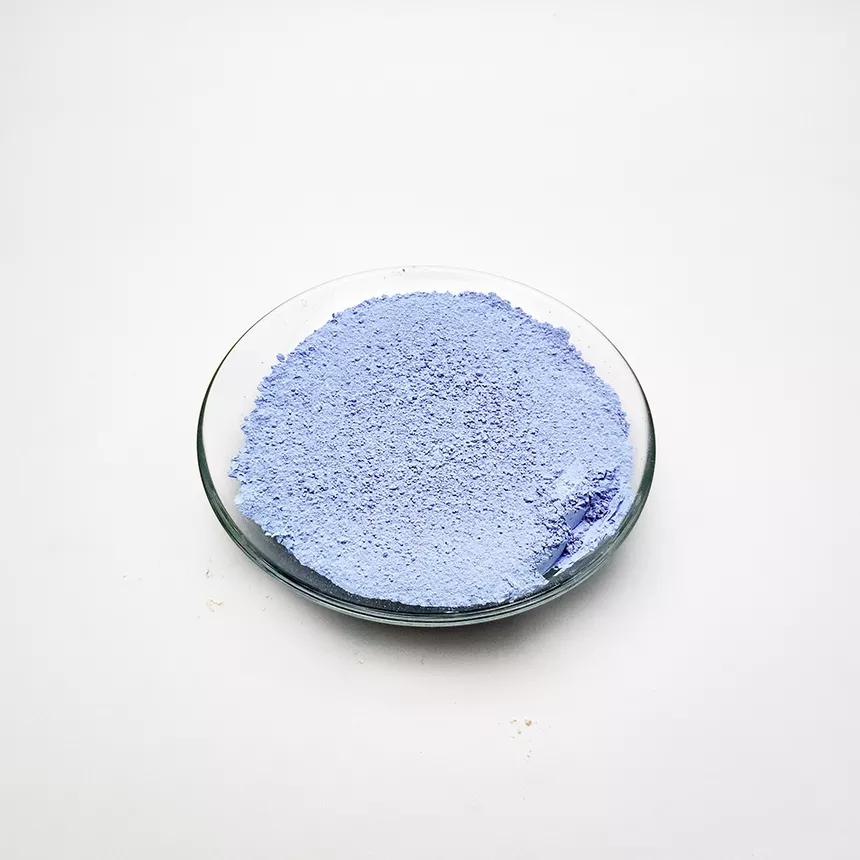Introduction
Neodymium oxide (Nd₂O₃) is a rare earth compound with exceptional chemical and physical properties that make it indispensable in various technological and industrial applications. This oxide appears as a pale blue or lavender powder and exhibits strong optical absorption, high thermal stability, and excellent magnetic properties. As industries continue to advance, the demand for neodymium oxide grows due to its unique contributions to high-performance materials and cutting-edge technologies.

1.Overview of Neodymium Oxide and Its Chemical Properties
Neodymium oxide belongs to the lanthanide series of rare earth elements. It is primarily obtained through the refinement of monazite and bastnäsite ores. Chemically, it is an amphoteric oxide, meaning it can react with both acids and bases to form neodymium salts. It boasts strong paramagnetic properties and is highly resistant to corrosion, making it an ideal component for applications that require durability and high efficiency.
2.Importance of Neodymium Oxide in Modern Industries
Industries ranging from electronics to renewable energy depend heavily on neodymium oxide. Its integration into advanced magnetic systems, optical devices, and catalytic converters has revolutionized product performance and efficiency. As global efforts shift toward sustainability and electrification, neodymium oxide’s role in green technologies continues to expand.
3.Brief History and Discovery of Neodymium Oxide
Neodymium was first discovered in 1885 by Austrian chemist Carl Auer von Welsbach. It was initially mistaken for a single element called didymium, which was later separated into neodymium and praseodymium. Since then, neodymium oxide has become an essential component in various scientific and industrial applications, contributing to the advancement of multiple technological frontiers.
Breif introduction
| Product | Neodymium Oxide |
| Cas | 1313-97-9 |
| EINECS | 215-214-1 |
| MF | Nd2o3 |
| Molecular Weight | 336.48 |
| Density | 7.24 g/mL at 20 °C(lit.) |
| Melting point | 2270 °C |
| Appearance | Light blue powder |
| Boiling Point | 3760℃ |
| Purity | 99.9%-99.95% |
| Stability | Slightly hygroscopic |
| Multilingual | NeodymOxid, Oxyde De Neodyme, Oxido Del Neodymium |
| Other name | Neodymium(III) Oxide, Neodymium sesquioxideNeodymia; Neodymium trioxide; Neodymium(3+) oxide; Dineodymium trioxide; neodymium sesquioxide. |
| Solubility | Insoluble in water, moderately soluble in strong mineral acids |
| Brand | Epoch |
The Role of Neodymium Oxide in High-Performance Magnets
1.How Neodymium Oxide Enhances the Strength of Neodymium-Iron-Boron (NdFeB) Magnets
Neodymium oxide plays a crucial role in the production of neodymium-iron-boron magnets, which are among the strongest permanent magnets available today. By incorporating neodymium oxide into these magnets, their coercivity, remanence, and overall durability are significantly improved. This results in powerful magnetic fields essential for various industrial applications.
2.Industrial Applications: From Electric Motors to Wind Turbines
Neodymium magnets are fundamental in the manufacturing of electric motors, particularly in hybrid and electric vehicles (EVs). They provide the high torque and energy efficiency required for superior motor performance. Additionally, wind turbines rely on these magnets for efficient energy conversion, enabling the generation of sustainable electricity on a large scale.
3.The Impact of Neodymium Magnets on Renewable Energy and Sustainability
As the world transitions towards cleaner energy sources, neodymium oxide’s role in renewable energy technologies becomes increasingly significant. The superior performance of NdFeB magnets enhances the efficiency of wind and hydroelectric power systems, reducing reliance on fossil fuels and contributing to a lower carbon footprint.
Neodymium Oxide in Glass and Ceramics Manufacturing
1.How Neodymium Oxide is Used to Produce Vibrant Glass Colors
Neodymium oxide is a popular additive in the glass industry due to its ability to produce vivid purple, blue, and red hues. This unique coloration arises from its absorption of specific light wavelengths, making it a preferred choice for decorative and artistic glassware.
2.Optical Applications: Laser Glass, Sunglasses, and Welding Goggles
Neodymium-doped glass is extensively used in lasers, providing stable and high-intensity light emission for medical, industrial, and scientific applications. Additionally, its ability to filter specific wavelengths makes it a critical component in protective eyewear, such as sunglasses and welding goggles, ensuring eye safety in high-intensity environments.
3.Role in Ceramic Materials and Specialty Coatings
Ceramic manufacturers incorporate neodymium oxide into specialty coatings to enhance mechanical strength and thermal resistance. These coatings are widely used in high-performance ceramic tiles, cookware, and advanced engineering applications.
Applications in Electronics and Advanced Technologies
1.Use of Neodymium Oxide in Capacitor Dielectrics and Semiconductors
Neodymium oxide is employed in dielectric materials for capacitors, where its high permittivity improves energy storage efficiency. It is also being explored as a potential component in next-generation semiconductors for improved electronic performance.
2.Contribution to Fiber Optics and Communication Devices
Neodymium oxide enhances the performance of fiber optic cables by reducing signal loss and improving transmission efficiency. This makes it an invaluable material for high-speed communication networks and data centers.
3.Role in Nanotechnology and Emerging Research Fields
Nanotechnology researchers are investigating neodymium oxide for its potential in catalysis, targeted drug delivery, and advanced imaging techniques. Its ability to interact at the nanoscale opens up possibilities for revolutionary breakthroughs in multiple scientific disciplines.



Catalysts and Chemical Processing Applications
1.How Neodymium Oxide Improves Catalyst Performance in Petroleum Refining
In petroleum refining, neodymium oxide acts as an effective catalyst in cracking and hydroprocessing reactions, enhancing fuel quality and production efficiency.
2.Its Role in Automotive Catalytic Converters
Neodymium oxide contributes to the efficiency of automotive catalytic converters by facilitating the breakdown of harmful emissions, reducing environmental pollution.
3.Potential Applications in Green Chemistry and Sustainable Industrial Processes
The potential of neodymium oxide in green chemistry extends to its ability to improve reaction efficiency and reduce waste in chemical synthesis. Its catalytic properties are being explored for sustainable industrial applications, such as carbon capture and conversion technologies.
Medical and Scientific Applications
1.Use of Neodymium-Based Lasers in Medical Procedures
Neodymium-doped yttrium aluminum garnet (Nd:YAG) lasers are widely used in medical procedures, including ophthalmic surgery, dermatology, and cancer treatment. Their precision and minimal invasiveness make them ideal for various therapeutic applications.
2.Applications in MRI Contrast Agents and Biomedical Research
Neodymium oxide is studied for its potential in enhancing magnetic resonance imaging (MRI) contrast agents. Its paramagnetic properties allow for improved imaging clarity, aiding in accurate medical diagnostics.
3.Future Potential in Drug Delivery and Targeted Therapies
Ongoing research suggests that neodymium-based nanoparticles could be used for targeted drug delivery, ensuring precise treatment with minimal side effects. This has the potential to revolutionize personalized medicine and cancer therapy.
Neodymium oxide is a vital material with diverse applications across multiple industries, from high-performance magnets and electronics to medical technologies and sustainable energy solutions. Its unique chemical properties make it indispensable in advancing modern technology. Looking ahead, innovations in recycling, material science, and green chemistry will further expand its role, ensuring its continued importance in shaping the future of various industries.
Post time: Mar-31-2025